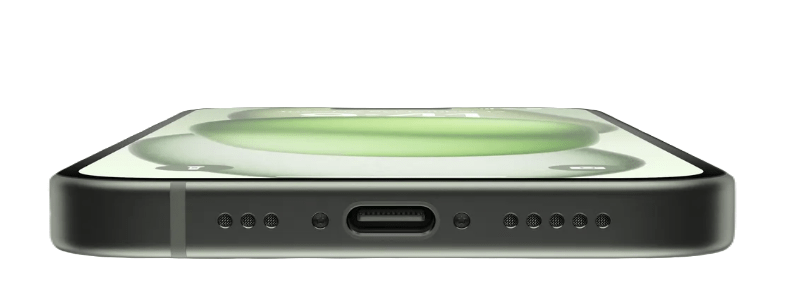In our constantly changing world, technology advances at an astonishing rate, and the mobile industry is certainly no stranger to innovation.
One of the companies leading the charge in pushing technological boundaries is Apple. They’re gearing up for a major shift with the introduction of the iPhone USB-C port.
This change is poised to bring about some remarkable advantages, not only for iPhone fans but also for the entire mobile industry in 2024. In this article, we’ll dive into the many benefits that come with Apple’s choice to embrace the USB-C port for its iPhones.
Introduction
The iPhone, a symbol of technological excellence, continues to reshape the mobile industry with every iteration. The introduction of the iPhone USB-C port represents a significant leap forward in terms of standardization and compatibility.
EU’s Mandatory USB-C Adoption: A Leap Towards Sustainability and Convenience
The European Union’s recent decision to enforce mandatory USB-C adoption represents a significant and forward-thinking step towards creating a more standardized and eco-friendly tech landscape.
These groundbreaking rules are poised to impact both consumers and the electronics industry as a whole, with far-reaching implications for convenience, sustainability, and innovation.
One of the primary advantages of this mandate is its potential to significantly reduce electronic waste. In today’s digital age, the proliferation of various charging cables and adapters has contributed to the growing problem of electronic waste.
The EU’s insistence on USB-C as the universal charging standard aims to curtail this issue by promoting a single, versatile connector that can be used across a wide range of devices.
This harmonization not only reduces the need for multiple cables but also extends the lifespan of existing chargers, minimizing the disposal of obsolete accessories.
As the EU strives to achieve its sustainability objectives, this move underscores its commitment to reducing the environmental footprint of the technology sector.
Furthermore, the adoption of USB-C as the mandatory standard enhances user convenience on a profound level. Consumers will no longer need to grapple with an assortment of cables and adapters to charge their devices.
USB-C’s versatility allows it to serve as a single solution for smartphones, tablets, laptops, and more.
Key Benefits of the iPhone 15’s Transition to USB-C
The arrival of the iPhone 15 featuring USB-C connectivity represents a noteworthy change in Apple’s product range. This transition brings along a host of advantages, all of which hold the promise of elevating the user experience and enhancing the device’s overall capabilities.
Universal Compatibility:
USB-C is an industry-standard connector found in a wide range of devices, including laptops, tablets, Android smartphones, and accessories. With the iPhone 15 using USB-C, users can simplify their charging and data transfer needs by using a single cable for multiple devices.
This universal compatibility reduces clutter and ensures users have the right cable on hand.
Faster Charging:
Perhaps the most prominent advantage of the iPhone USB-C port is faster charging speeds compared to Apple’s previous proprietary connectors. This means that users can charge their iPhone 15 more quickly, saving valuable time in their daily routines.
Additionally, USB-C can support higher wattages, which may enable fast-charging capabilities that were previously unavailable on iPhones.
Universal Compatibility
The beauty of USB-C lies in its compatibility with a wide array of devices, including laptops, tablets, and other smartphones. This universal compatibility streamlines the user experience by enabling the use of a single cable for multiple devices.
Enhanced Data Transfer:
USB-C offers faster data transfer rates, allowing users to move photos, videos, and other files between their iPhone 15 and other devices at higher speeds. This is especially advantageous for content creators, professionals, and anyone who frequently transfers large files.
Interoperability with Accessories:
USB-C accessories are readily available, and this standardization enables users to easily connect their iPhone 15 to a variety of peripherals such as external displays, hubs, and audio equipment.
This broad compatibility opens up new possibilities for productivity, gaming, and multimedia experiences.
Future-Proofing:
As USB-C continues to gain traction as the industry standard, adopting it in the iPhone 15 ensures compatibility with future devices and accessories. Users can have confidence that their investment in USB-C cables and accessories will remain relevant for years to come.
Environmental Benefits:
With the European Union pushing for a reduction in electronic waste by standardizing charging ports, Apple’s adoption of USB-C in the iPhone 15 aligns with these sustainability goals.
USB-C’s widespread use across devices helps reduce the need for consumers to accumulate and dispose of multiple cables and adapters, contributing to a greener and more eco-friendly tech ecosystem.
Impacts on the Accessory Market
The transition to USB-C will undoubtedly have an impact on the accessory market. Manufacturers will need to adapt and create products that cater to this new standard, offering consumers a broader range of options.
Transitioning to USB-C
The transition to USB-C may present some challenges, particularly for users who have invested heavily in Lightning accessories. However, the benefits far outweigh the inconveniences, making it a worthwhile shift.
Potential Challenges
While USB-C offers numerous advantages, it may also bring about challenges such as counterfeit cables and accessories. Users should exercise caution and opt for certified products to ensure compatibility and safety.
Conclusion
To sum it up, the arrival of the iPhone USB-C port ushers in a fresh era of innovation and ease in the mobile industry for 2024. Its benefits are far-reaching, encompassing speedy charging, upgraded audiovisual performance, better compatibility, and a decrease in electronic waste.
This transition not only bolsters Apple’s standing in the market but also plays a part in creating a more sustainable and user-friendly tech environment.
FAQs
Can I still use my old Lightning accessories with the new iPhone USB-C port?
The compatibility of your old accessories may vary. Some might require adapters or replacements.
How does USB-C contribute to environmental sustainability?
USB-C reduces electronic waste by standardizing cables and minimizing the need for multiple adapters.
Can I use a USB-C charger with devices other than my iPhone?
Yes, USB-C chargers are versatile and can be used with various compatible devices.
Will the iPhone USB-C port lead to a price increase?
While the transition may involve some costs for Apple and manufacturers, the benefits for users justify any potential price adjustments.
Is the iPhone USB-C port more durable than the Lightning port?
USB-C connectors are designed for durability, but proper care is still essential to ensure their longevity.


1 thought on “Benefits of iPhone USB-C Port in the mobile industry in 2024”